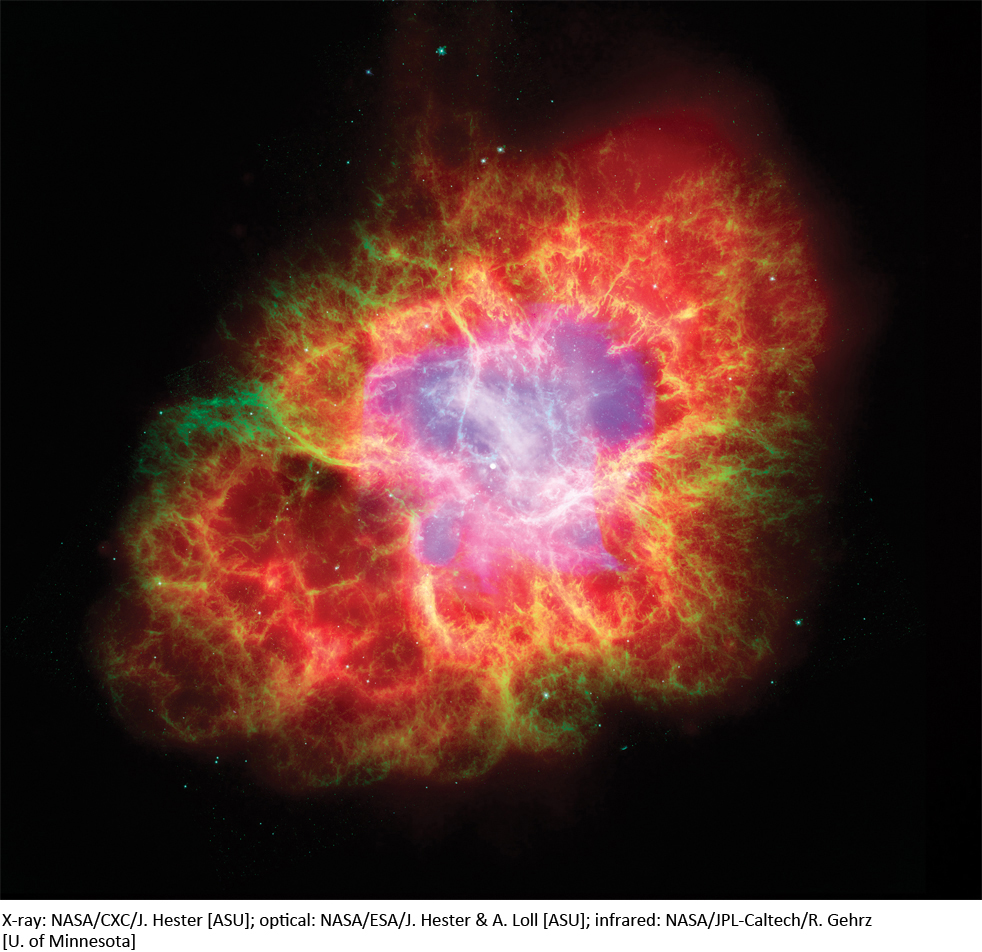279

Predicting the Violent End of the Largest Stars
CHAPTER LEARNING OBJECTIVES
By reading the sections of this chapter, you will learn:
- 12-1 High-mass stars create heavy elements in their cores before violently blowing apart in supernova explosions, leaving behind remnants
- 12-2 Core-collapse supernovae can leave behind remnants, neutron stars, and pulsars
- 12-3 Black holes are created in the death throes of the most massive of stars
- 12-4 Black holes cannot be seen directly
- 12-5 White dwarfs and pulsars in close binary systems can become novae, bursters, and supernovae
280
When a relatively low-mass star like our Sun reaches the end of its main-sequence lifetime and becomes a red giant, it has a hot compressed core and a cooler, bloated atmosphere, ending its evolution by gently expelling its outer layers into space, leaving a burned-out core as remains. In contrast, a high-mass star ends its life in almost inconceivable violence. At the end of its short life, the core of such a star collapses suddenly. This triggers a powerful supernova explosion that can be as luminous as an entire galaxy of stars. The immense force of a supernova combines atoms into heavier elements, which are ejected into interstellar space. Such heavy elements become the essential building blocks for planets, like our Earth. Thus, the deaths of massive stars can provide the seeds for planets orbiting succeeding generations of stars.
In this chapter, we will look at the physical processes that occur when the most massive stars reach the final stages of their life cycles. After a cessation of the nuclear reactions that support a giant stellar core, a star’s outer layers can rapidly dissipate, leaving behind a tiny, crushed core that emits very little light as a neutron star or a pulsar. As we will see, it is not only the largest of stars that can end violently. A normally quiet white dwarf can suddenly flare up into an exploding supernova if it gathers explosive gas from a companion star in a close binary system.
But, for the largest of the giant stars, the end can be even more bizarre. Imagine, instead, a swirling disk of gas and dust, orbiting around an object that has more mass than the Sun but is so dark that it cannot be seen. Imagine the material in this disk being compressed and heated as it spirals into the unseen object, reaching temperatures so high that the material emits X-rays. And imagine that the unseen object has such powerful gravity that any material that falls into it simply disappears, never to be seen again. These unseen objects with immensely strong gravity are called black holes. The matter that makes up a black hole has been so greatly compressed that it violently warps space and time. If you get too close to a black hole, the speed you would need to escape it exceeds the speed of light. Because nothing can travel faster than light, nothing—not even light—can escape from a black hole. Even more remarkable is the discovery that black holes of more than a million solar masses lie at the centers of many galaxies, including our own Milky Way.